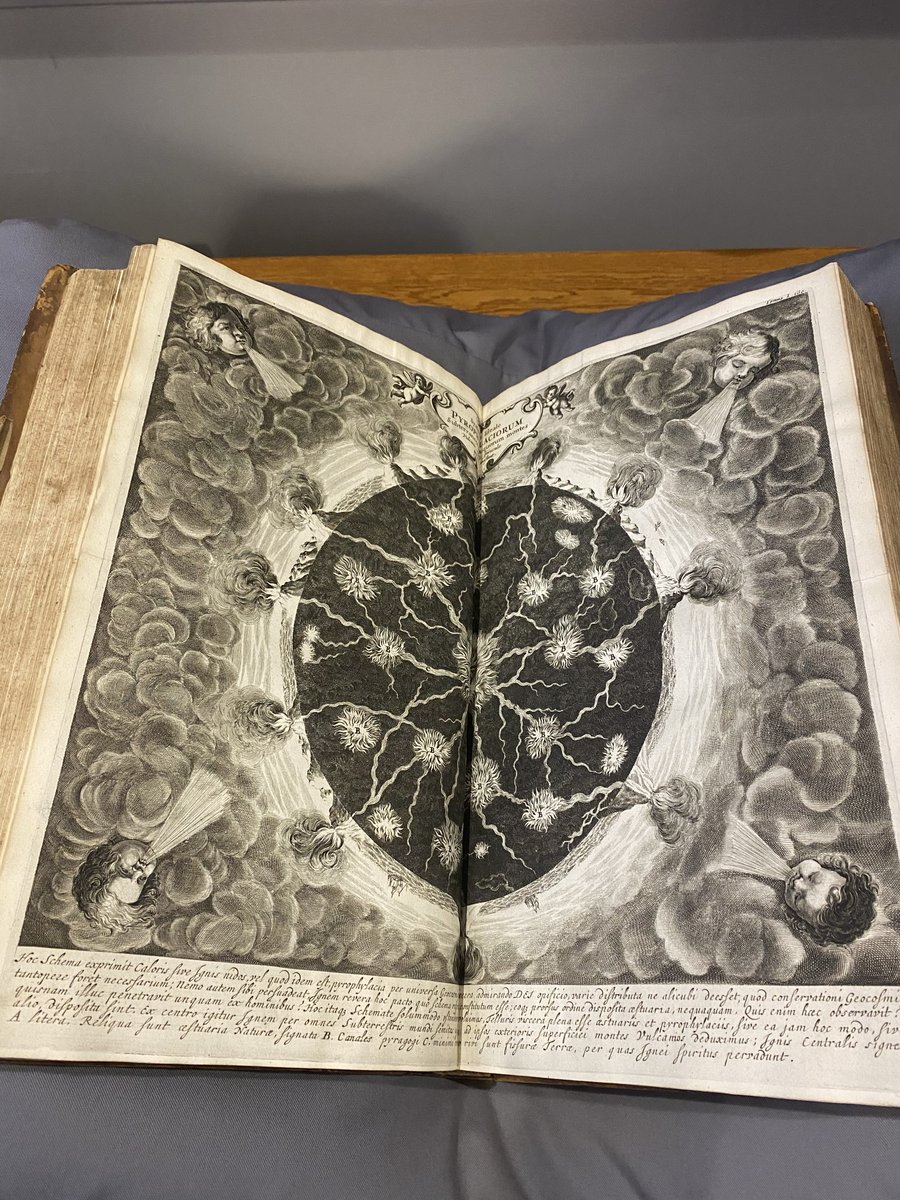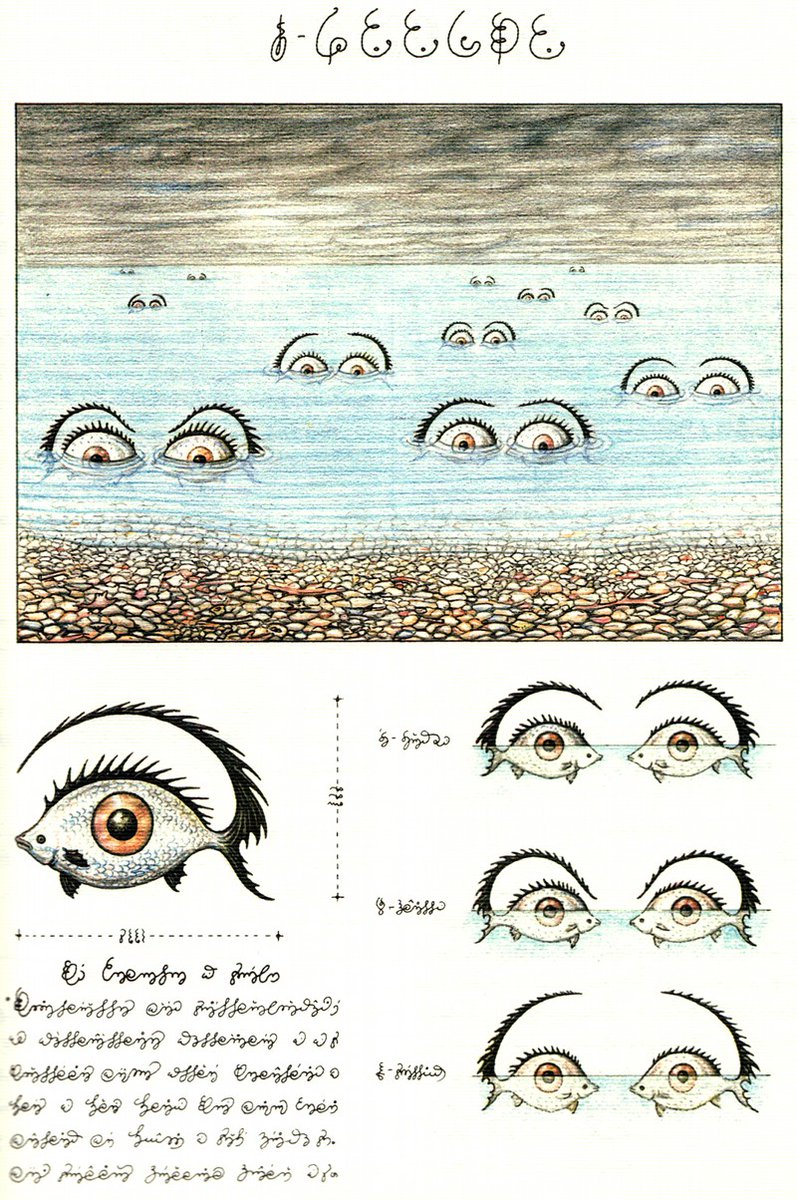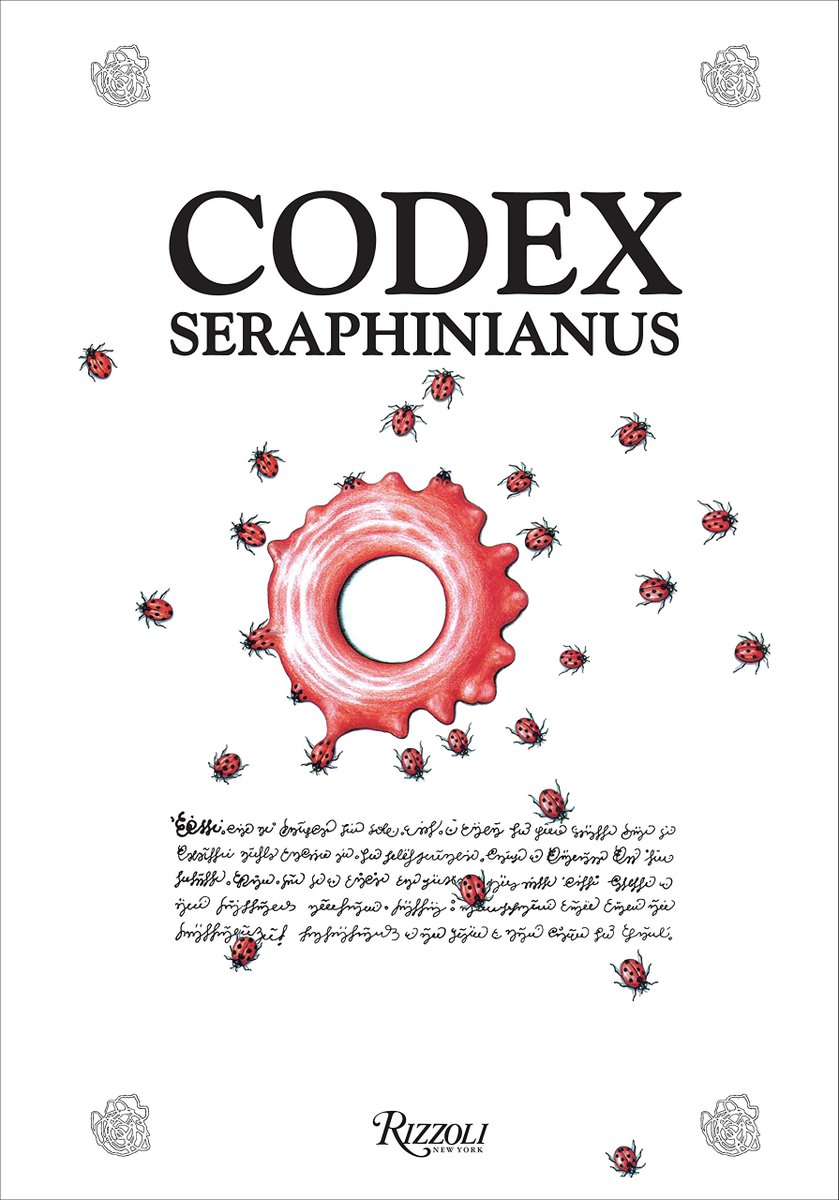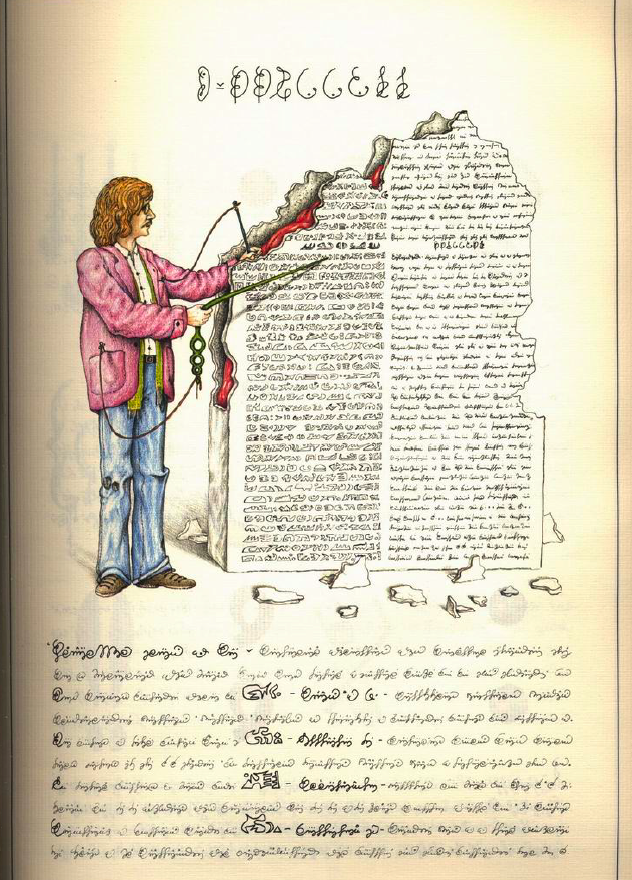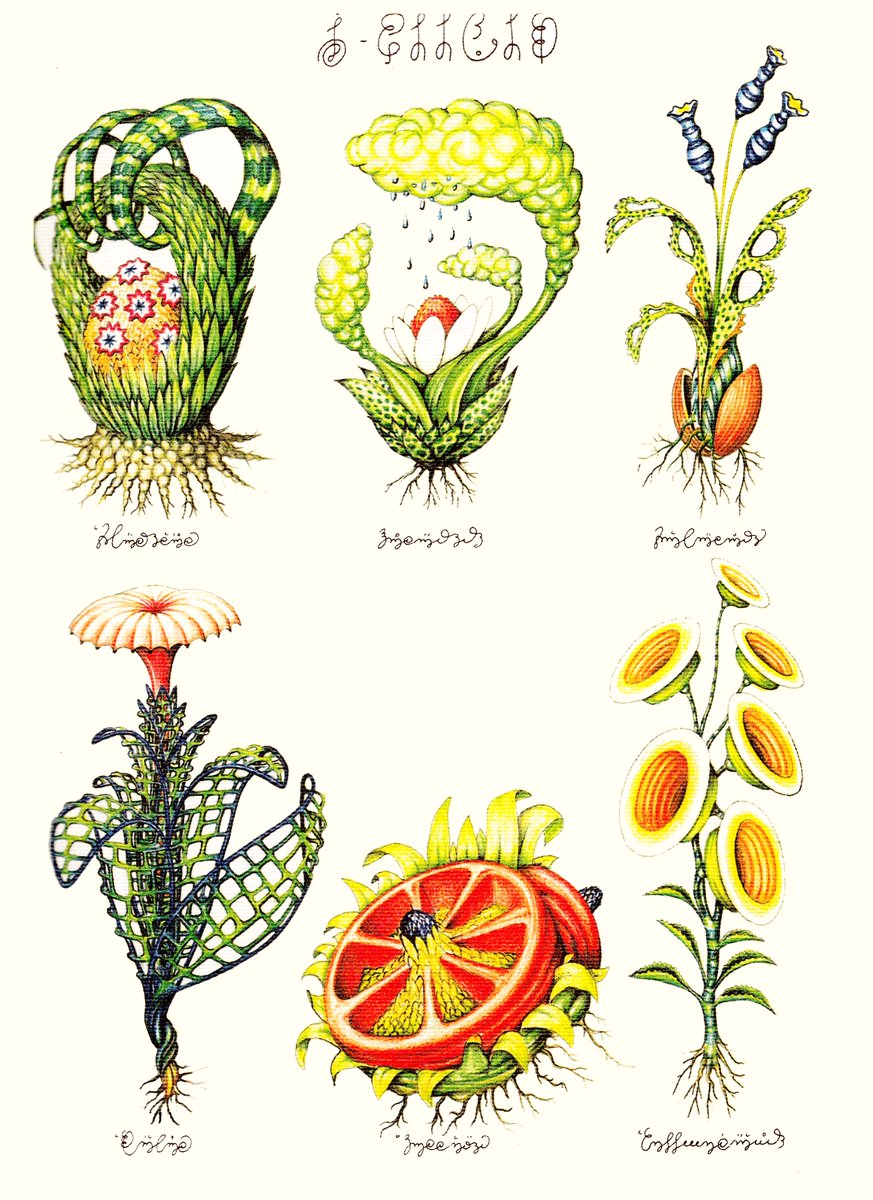Today at #AH4236 "Images and Knowledge in Early Modern Europe" we paid a visit to @StAndrewsUniLib Special Collections and examined a range of wonderful early modern books 👇
* These photos have been provided by students - thank you very much all for your contributions!
* These photos have been provided by students - thank you very much all for your contributions!

Above we see one of the well-known (and fascinating) illustrations featured in Athanasius Kircher's 'Arca Noe in tres libros digesta' (1675) [@StAndrewsUniLib, r17f BS658.K5C75]
Here you have a detail of this image, showing the distribution of creatures inside Noah's Ark 👇
Here you have a detail of this image, showing the distribution of creatures inside Noah's Ark 👇

Did you see the pair of rhinoceros? We examined two early representations of this animal, based on Dürer's famous print:
- the illustration in a 1550 edition of Münster's Cosmographiae uniuersalis
- Gessner's Historiae Animalium (I, 1551) [@StAndrewsUniLib, Typ SwZ.B51FG]
- the illustration in a 1550 edition of Münster's Cosmographiae uniuersalis
- Gessner's Historiae Animalium (I, 1551) [@StAndrewsUniLib, Typ SwZ.B51FG]

The world on one page (well, two) - 1550 Sebastian Münster's Cosmographiae uniuersalis @StAndrewsUniLib #AH4236 

Image of the sun in Athanasius Kircher's Mundus subterraneus (1665) [@StAndrewsUniLib, r17f QE25.K5]
cf. recent image taken by the Daniel K. Inouye Solar Telescope #AH4236

cf. recent image taken by the Daniel K. Inouye Solar Telescope #AH4236


From the very big to the very small >
Robert Hooke's Micrographia (1667) [@StAndrewsUniLib, r17f QH271.H6C67] #AH4236

Robert Hooke's Micrographia (1667) [@StAndrewsUniLib, r17f QH271.H6C67] #AH4236
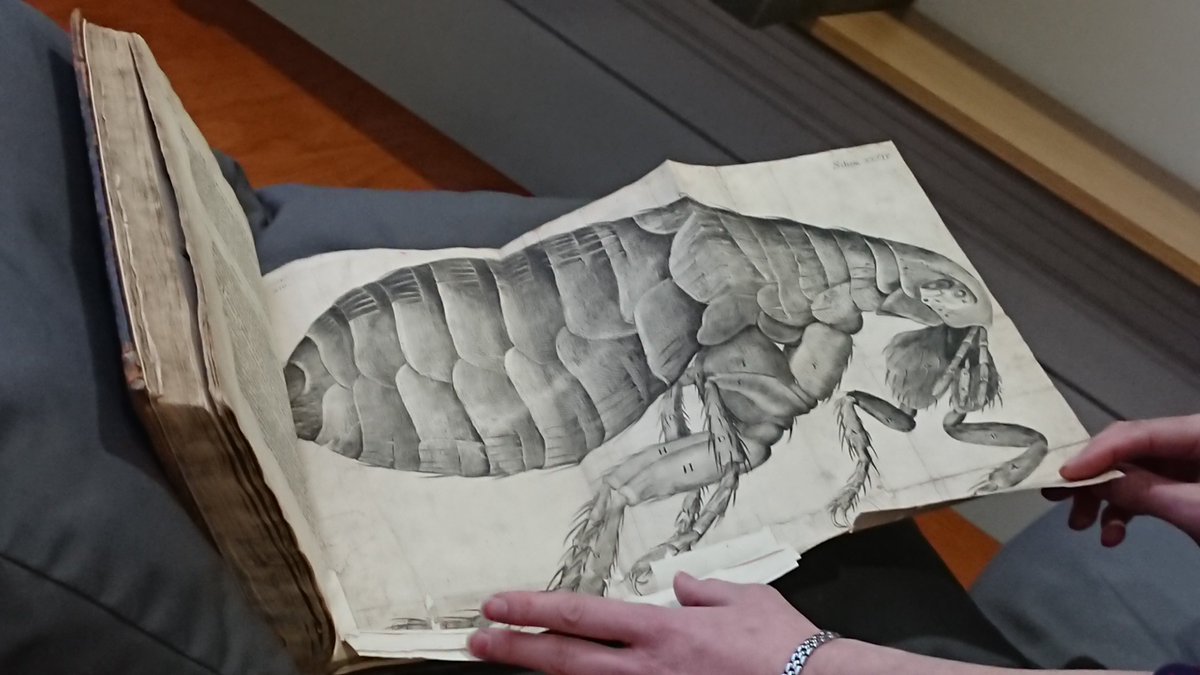

Passionflowers in John Parkinson's Paradisi in sole paradisus terrestris (1629) [@StAndrewsUniLib, TypBL.C29LP] #AH4236
Great to be able to examine the "real thing" after our discussion of these images in class!
Great to be able to examine the "real thing" after our discussion of these images in class!

Newton's handwritten notes on alchemy (left) and one my favourite images of the Tower of Babel in Kircher's 1679 treatise on the topic (right). I'm pairing these on purpose, to highlight their affinities. @StAndrewsUniLib #AH4236 



Tower of Babel, in Athanasius Kircher's Turris Babel (1679) [@StAndrewsUniLib, r17f BS1238.B2K5] #AH4236
Kircher, 😉
Kircher, 😉

Thank you very much, Elizabeth Henderson (@StAndrewsUniLib) for all your help and support today! #AH4236 cc @ArtHistoryStA @univofstandrews 

@StAndrewsUniLib @ArtHistoryStA @univofstandrews Here is the illustration of the rhinoceros in the 1550 edition of Münster's Cosmographiae uniuersalis @StAndrewsUniLib #AH4236 
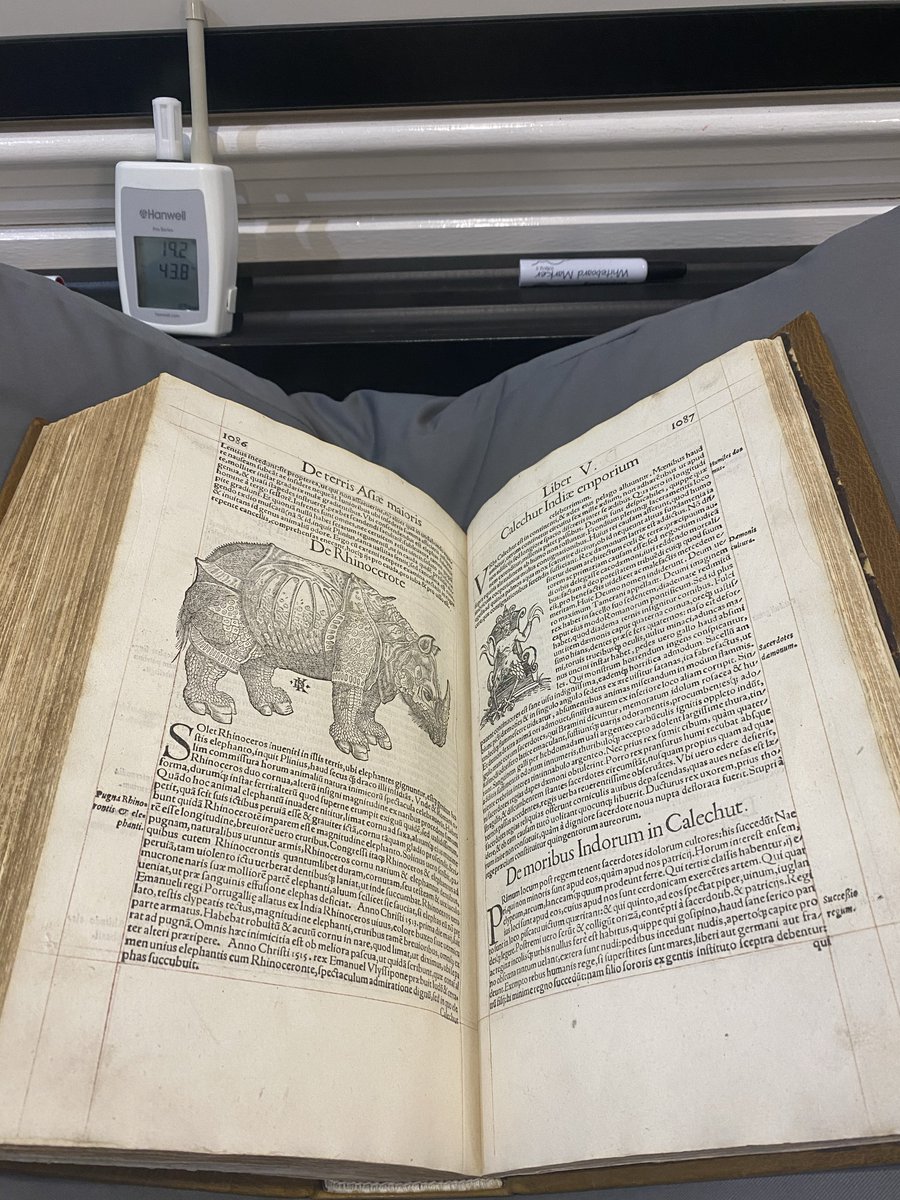
One of my favourite images in Hooke's Micrographia (1667)
👇
Detail of the "hemispheres" that make the compound eye of a fly, "as they appear’d in the bigger Magnifying-glass to reflect the Image of the two windows of my Chamber".
@StAndrewsUniLib #AH4236
👇
Detail of the "hemispheres" that make the compound eye of a fly, "as they appear’d in the bigger Magnifying-glass to reflect the Image of the two windows of my Chamber".
@StAndrewsUniLib #AH4236

• • •
Missing some Tweet in this thread? You can try to
force a refresh


